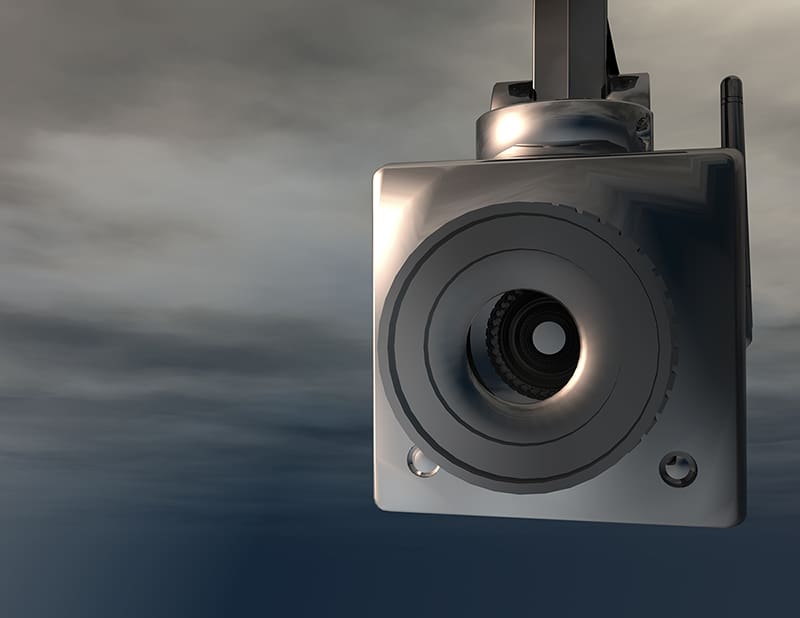Click here to get this post in PDF
 Although it can be a controversial topic amongst staff members, workplace monitoring is a legitimate, legal method that employers can utilise as a way of protecting their staff and business. Methods include maintaining CCTV systems, viewing internet browsing history, checking email traffic, listening in on telephone calls or conducting employee bag searches. However, recent research conducted by the TUC suggests a growing resentment to increased levels of monitoring, highlighting that more than half of UK workers believe they are watched by their bosses and only 38% feel that they are able to challenge this. If implemented correctly, strong systems for evaluating employee activity can help to safeguard against wrongful working practices and encourage higher levels of productivity within an organisation, provided all monitoring is proportional to the situation.
Although it can be a controversial topic amongst staff members, workplace monitoring is a legitimate, legal method that employers can utilise as a way of protecting their staff and business. Methods include maintaining CCTV systems, viewing internet browsing history, checking email traffic, listening in on telephone calls or conducting employee bag searches. However, recent research conducted by the TUC suggests a growing resentment to increased levels of monitoring, highlighting that more than half of UK workers believe they are watched by their bosses and only 38% feel that they are able to challenge this. If implemented correctly, strong systems for evaluating employee activity can help to safeguard against wrongful working practices and encourage higher levels of productivity within an organisation, provided all monitoring is proportional to the situation.
As outlined in Part 3 of the Employment Practices Code by the Information Commissioner’s Office (ICO), employers can monitor the activities of their staff as long as the data collected is processed in line with data protection legislation. This is now in the form of the Data Protection Act 2018, which introduces the General Data Protection Regulation (GDPR) into British law. The code also dictates that employees must be informed of all monitoring that is taking place and how the data is to be collected, processed and stored. Furthermore, the data must only be used for the purposes for which it was originally collected. For example, if a manager decides to install CCTV equipment within a building for the purpose of deterring or monitoring instances of employee theft, they cannot then use the images recorded to comment on employee entrances and exits from work without informing their employees first. Whilst the Code still contains a reference to the previous Data Protection Act, its principles remain applicable under the new laws.
Arguably, by keeping a closer eye on employee emails, internet browser history, and locations, employers are able to evaluate if they are acting in an inappropriate manner that would be damaging for the company and take appropriate action. Furthermore, electronic monitoring has shown to be effective when it is for a clearly-defined and well-explained purpose that is targeted at specific measures of performance. Any surveillance undertaken can potentially be combined with clear performance management frameworks, employee compensation, and benefits, thus encouraging increased levels of productivity. The issue lies in ensuring that employers approach this in an open and fair manner that does not make the employee feel they are constantly being watched. Studies have shown that the more employees feel their privacy is violated the more dissatisfied they become with their role.
The findings of the TUC show that overuse of surveillance data can result in the setting of unfair targets and ‘take away autonomy’, which can have strong implications for employee morale. Employees may even respond by trying to subvert this surveillance, creating further issues for employers to respond to. To support this fact, the TUC outlines several examples in which employees felt they were being severely over-monitored, including cameras and microphones constantly recording driver activity in vans. In particular, forms of surveillance that the TUC found to be the least acceptable to workers include facial recognition software, monitoring of social media accounts and recording worker locations on portable devices.
Therefore, whilst employers are legally able to monitor their employees through various methods they should approach implementing these systems in an open, fair and lawful manner. It would also be wise to consider if this is a necessary course of action and ensure that appropriate steps are taken to confirm that the monitoring is proportional to the situation. As TUC General Secretary Frances O’Grady concludes, employers ‘should discuss and agree on workplace monitoring policies with their workforces – not impose them upon them’.
You may also like: 4 Strategies to Balance Efficiency and Employee Satisfaction
Comment by Peninsula Employment Law Director Alan Price

[…] You may also like: Can You Spy On Your Employees? […]